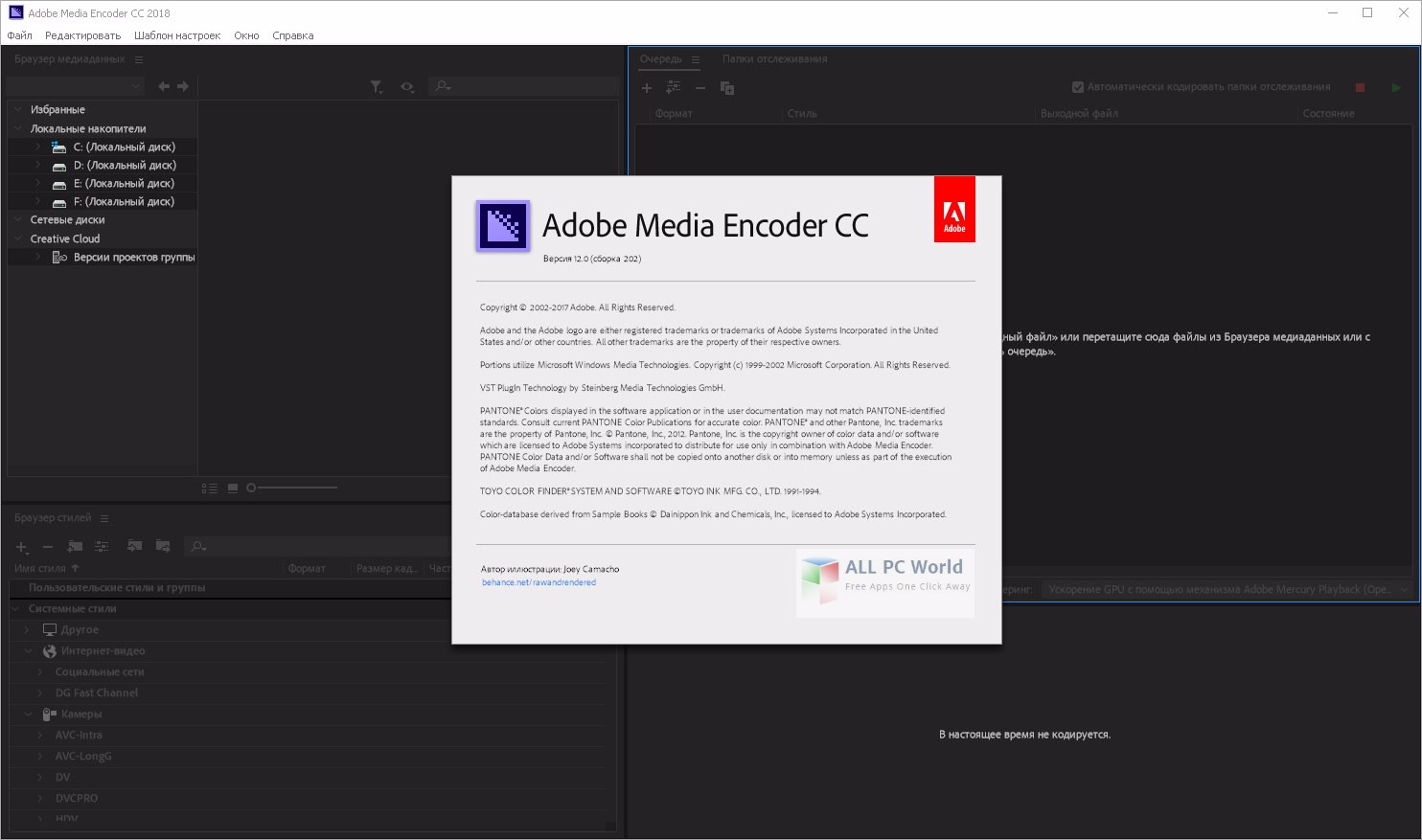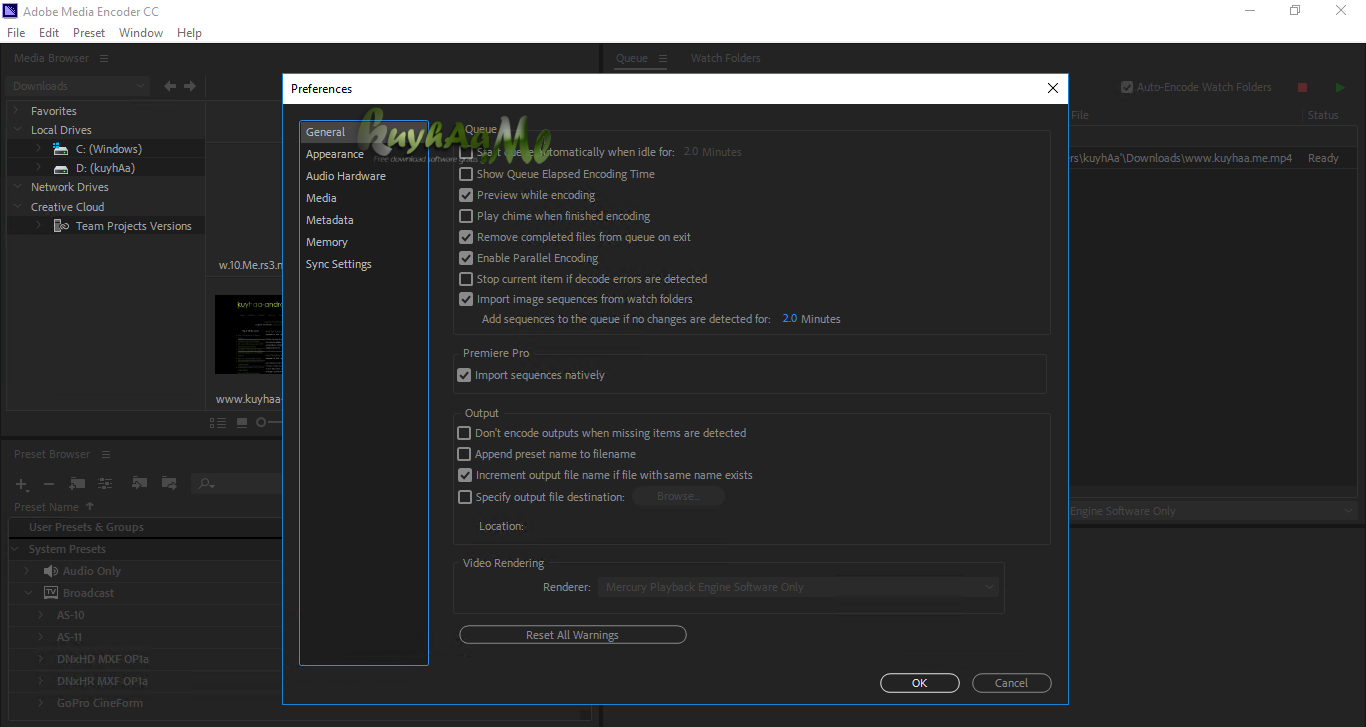

- ADOBE MEDIA ENCODER CC 2018 RENDERER HOW TO
- ADOBE MEDIA ENCODER CC 2018 RENDERER PRO
- ADOBE MEDIA ENCODER CC 2018 RENDERER SOFTWARE
To see a step-by-step guide on how to do this and learn more about RAM in After Effects, check out:Īnother easy way to speed up renders is to turn on Cache Frames When Idle. In most cases, you can set this to the minimum value After Effects allows. In After Effects, navigate to Edit > Preferences > Memory & Performance.įrom there, you can set the RAM Reserved for Other Applications. You need to tell After Effects how much RAM it should reserve for other applications. Optimize RAM Reserved for Other Applications To learn more, check out Adobe’s After Effects User Guide on Multi-Frame Rendering.Ģ. To enable this, navigate to Edit > Preferences > Memory & Performance. In short, the more cores your CPU has, the more frames After Effects can render simultaneously. The first setting you need to turn on for faster renders is Enable Multi-Frame Rendering. However, you can take a few steps to make your After Effects renders as fast as possible. Rendering is an annoying (but unavoidable) aspect of the motion graphics process.
ADOBE MEDIA ENCODER CC 2018 RENDERER PRO
Nonetheless, keep in mind that performance inside of Premiere Pro CC may slow down while Media Encoder is rendering items in the background.Let’s speed up your render times-and workflow-in After Effects with these handy settings and hardware tips. In addition to the automated exporting process, moving your render operations to a queue in Media Encoder allows you to use Premiere Pro CC simultaneously regardless of the editing task you might be working on at the moment. This will trigger Media Encoder to commence the rendering process, automatically going through the queue until all render jobs have been completed. Once you’ve imported all the items you want to render inside the queue, all you have to do is press the green play button.

Inside of the queue, you can sort the order of the export jobs as you wish. Using this Queue method allows you to perform multiple export workflows – such as exporting different sections of a project or even exporting the same project but into multiple output formats and codecs. Inside of Adobe Media Encoder, you have the option to import multiple sequences, projects, and videos for transcoding or export, all of which are added to an ordered list (or queue).

When clicked, Premiere Pro CC will send your selected media for export to Media Encoder.
ADOBE MEDIA ENCODER CC 2018 RENDERER SOFTWARE
When clicked, Premiere Pro CC will show a progress bar as the software renders out your project to the desired format.Īs for the Queue button, it is actually a powerful way to export multiple sequences and clips simultaneously. To get the most basic explanation out of the way, the Export button does exactly what it’s labeled to do: it exports your project. By understanding what each function does, you may find yourself improving the rendering process, thus making your post-production workflow more efficient down the line.

To put things into perspective, seasoned video editor Justin Odisho goes over the differences between the Queue and Export options in Premiere Pro CC. While it may be obvious which route you should take, there are many novices out there who are still confused as to how these two functions do actually work in practice. After spending hours editing your project inside of Premiere Pro CC, it’s finally time to render out your timeline, right? Well, if you’re familiar with the NLE, you’ll know well that in the Export Media window, you’re given two options: Queue and Export.


 0 kommentar(er)
0 kommentar(er)
